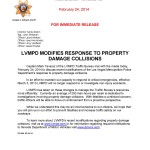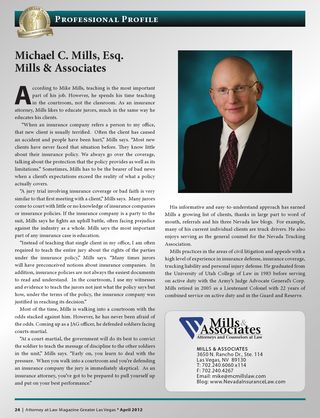In civil cases, a Nevada Plaintiff has the burden of proof. But what standard of proof must that Plaintiff meet to prevail? In a civil case, the standard of proof in Nevada is “by a preponderance of evidence”. The case of Deiss v. S. Pac. Co., 56 Nev. 169, 53 P.2d 332 (1936) provides a great explanation as to what it means to prove something “by a preponderance of evidence”. This case involves a crash between a car and a train. The jury found in favor of the deceased driver’s estate … [Read more...]
Once An Insured Proves Coverage, The Burden Shifts To the Insurer To Prove An Exception Or Exclusion
In Nevada Insurance Coverage lore, Victor Havas is legend. Cases involving Mr. Havas answer so many insurance coverage questions. What duty does an insurance agent owe to a customer? Havas v. Carter, 515 P.2d 397, 89 Nev. 497 (1973). For more information, see here. When is replacement value the appropriate measure of damages rather than actual case value? Havas v. Atlantic Ins. Co., 95 Nev. 415, 596 P.2d, 246 (1979). here. How can an insurance company avoid a waiver when it investigates a … [Read more...]
Nevada Requires Drivers To File Traffic Reports If Police Do Not Respond
The Las Vegas’ Metropolitan Police Department no longer responds to motor vehicle accidents where no one reports an injury. However, if Metro does not respond, current law requires drivers (or if the drivers are unable, then the owners) to file an accident report if a Nevada motor vehicle accident results in property damage that exceeds $750.00. See NRS 484E.070(2). Thus, these driver’s Reports of Traffic Accident have become more critical than ever before. The Report of Traffic Accident … [Read more...]
What Will Happen When Las Vegas Metro PD No Longer Responds To “Property Damage Only” Accidents?
Click here to read "LVMPD Modifies Response to Property Damage Collisions" or click on the image above. … [Read more...]
The Burden On Apportionment Of Damages Shifts To The Defendant Where Two Separate Accidents Cause An Inseparable Injury
The Plaintiff usually has the burden to prove that the Defendant was negligent and that the Defendant’s negligence caused him injury. However, in cases where two accidents happen so close together that one cannot tell which accident caused which injury, what is a Plaintiff to do? This was the question posed to the Nevada Supreme Court in the case of Kleitz v. Raskin, 103 Nev. 325, 728 P.2d 508 (1987). In Kleitz, the Plaintiff sustained injury in two successive automobile accidents, one … [Read more...]







